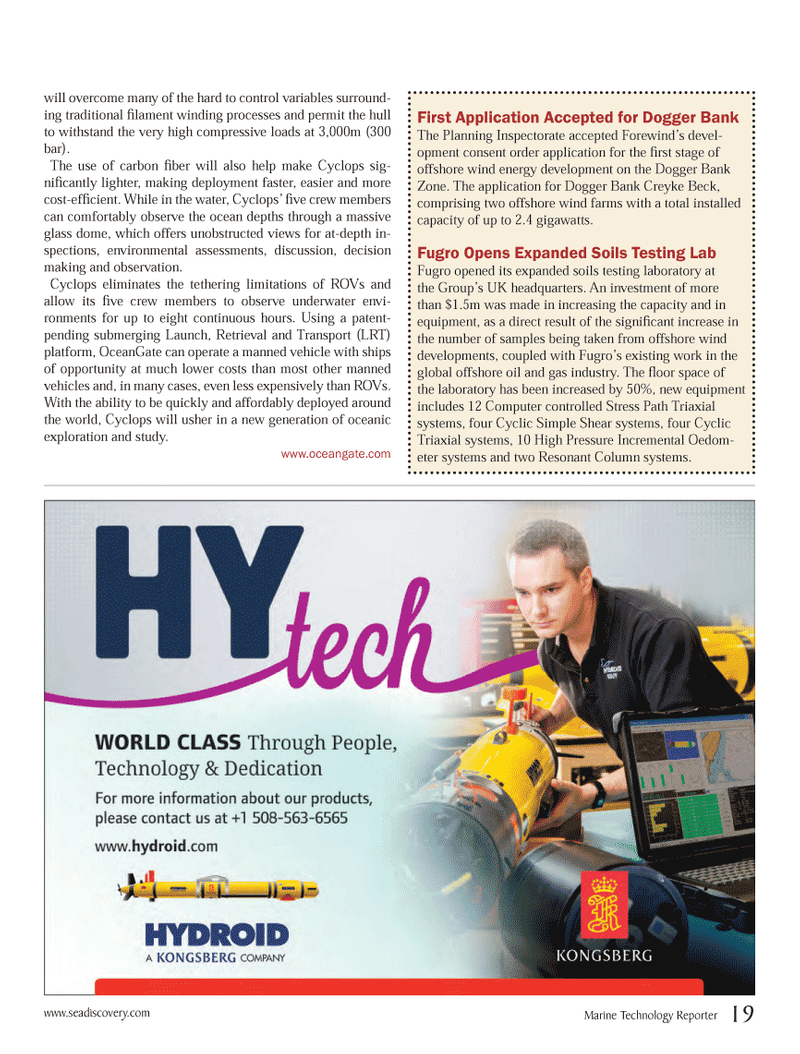
Page 19: of Marine Technology Magazine (October 2013)
Subsea Defense
Read this page in Pdf, Flash or Html5 edition of October 2013 Marine Technology Magazine
will overcome many of the hard to control variables surround- ing traditional Þ lament winding processes and permit the hull to withstand the very high compressive loads at 3,000m (300 bar).The use of carbon Þ ber will also help make Cyclops sig- niÞ cantly lighter, making deployment faster, easier and more cost-efÞ cient. While in the water, CyclopsÕ Þ ve crew members can comfortably observe the ocean depths through a massive glass dome, which offers unobstructed views for at-depth in- spections, environmental assessments, discussion, decision making and observation. Cyclops eliminates the tethering limitations of ROVs and allow its Þ ve crew members to observe underwater envi- ronments for up to eight continuous hours. Using a patent-pending submerging Launch, Retrieval and Transport (LRT) platform, OceanGate can operate a manned vehicle with ships of opportunity at much lower costs than most other manned vehicles and, in many cases, even less expensively than ROVs. With the ability to be quickly and affordably deployed around the world, Cyclops will usher in a new generation of oceanic exploration and study. www.oceangate.com First Application Accepted for Dogger Bank The Planning Inspectorate accepted ForewindÕs devel- opment consent order application for the Þ rst stage of offshore wind energy development on the Dogger Bank Zone. The application for Dogger Bank Creyke Beck, comprising two offshore wind farms with a total installed capacity of up to 2.4 gigawatts. Fugro Opens Expanded Soils Testing Lab Fugro opened its expanded soils testing laboratory at the GroupÕs UK headquarters. An investment of more than $1.5m was made in increasing the capacity and in equipment, as a direct result of the signiÞ cant increase in the number of samples being taken from offshore wind developments, coupled with FugroÕs existing work in the global offshore oil and gas industry. The ß oor space of the laboratory has been increased by 50%, new equipment includes 12 Computer controlled Stress Path Triaxial systems, four Cyclic Simple Shear systems, four Cyclic Triaxial systems, 10 High Pressure Incremental Oedom- eter systems and two Resonant Column systems. Marine Technology Reporter 19www.seadiscovery.com MTR #8 (18-33).indd 19MTR #8 (18-33).indd 1910/16/2013 9:22:16 AM10/16/2013 9:22:16 AM

 18
18

 20
20
